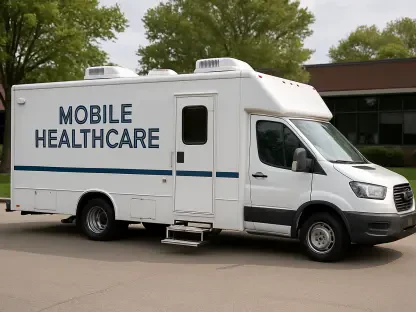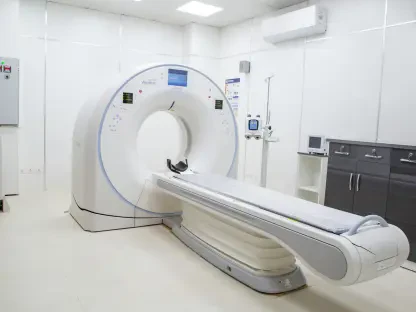Imagine a rural family in a remote part of Australia, miles away from the nearest physiotherapy clinic, struggling to manage a child’s rehabilitation after surgery, or an urban professional unable to fit a dietitian appointment into a packed schedule due to caregiving duties. These scenarios highlight a critical challenge in health care: access to allied health services like physiotherapy and dietetics often remains out of reach for many due to geographical, logistical, and time constraints. Telehealth has emerged as a game-changing solution, breaking down these barriers by connecting patients with skilled professionals through virtual platforms. With innovative initiatives spearheaded by organizations like The Healthy Communities Foundation Australia (THCFA), access to essential care is being redefined. This transformative approach not only addresses longstanding disparities but also offers a glimpse into the future of equitable health care delivery across diverse populations.
Breaking Down Geographical Barriers
Telehealth is revolutionizing the way allied health care reaches individuals in isolated and rural regions, where access to professionals has historically been limited. In areas like New England, Australia, patients often face significant travel distances to reach specialized care, a burden that can deter consistent treatment. THCFA’s recent introduction of virtual services in physiotherapy and dietetics directly tackles this issue by enabling consultations from the comfort of home. This initiative, supported by regional health systems such as Hunter New England Health, prioritizes minimizing patient travel, particularly for those far from urban centers like Newcastle. Beyond just convenience, this virtual model ensures that essential rehabilitation and nutritional guidance are no longer privileges reserved for those in proximity to clinics, but rights accessible to all, regardless of location. The impact is profound, as it allows individuals in remote communities to engage with care that was previously unattainable due to logistical hurdles.
Moreover, telehealth extends its benefits beyond rural settings, proving equally valuable for urban dwellers facing their own access challenges. While city residents may have more local options, busy schedules, mobility issues, or caregiving responsibilities can still prevent regular in-person visits. Virtual appointments offer a flexible alternative, accommodating the diverse needs of patients who might otherwise forgo necessary care. THCFA Chief Executive Richard Cheney emphasizes that the appeal of these services lies in their adaptability, catering to anyone constrained by time or circumstance. This broad applicability underscores telehealth’s role as a complementary tool to traditional care, ensuring that no one is left behind due to situational barriers. By bridging the gap between patients and providers, this technology fosters a more inclusive health care system that prioritizes accessibility over geographical or personal limitations.
Enhancing Patient Engagement and Outcomes
One of the standout advantages of telehealth in allied health care is its ability to empower patients through active participation in their treatment plans. In physiotherapy, for instance, virtual sessions encourage consistency in rehabilitation exercises by reducing dependence on hands-on therapy. Patients are guided to take charge of their recovery, building confidence and independence under the supervision of experts like Jessica Lynch, who specializes in areas such as pediatric care, tendinopathies, and surgical rehabilitation. This shift toward self-managed care not only helps sustain long-term health improvements but also alleviates the pressure on in-person clinic visits. The result is a more engaged patient population, better equipped to adhere to prescribed routines without the constant need for physical oversight, ultimately leading to improved recovery trajectories.
In the realm of dietetics, telehealth facilitates personalized, evidence-based support that drives lasting lifestyle changes. Dietitian Sophie Cann, part of THCFA’s initiative, focuses on culturally sensitive nutrition plans for conditions like diabetes, cardiovascular disease, and kidney issues, alongside weight management and pediatric care. Virtual consultations allow for tailored advice that fits into patients’ daily lives, fostering sustainable habits through compassionate guidance. This approach contrasts with traditional models where follow-up can be sporadic due to access challenges, as telehealth ensures regular check-ins and adjustments to care plans. By meeting patients where they are, both literally and figuratively, this method enhances accountability and outcomes, proving that quality care can thrive outside the confines of a physical office setting.
Streamlining Access Through Technology and Policy
The practical implementation of telehealth services reveals a user-friendly framework designed to maximize reach and equity in allied health care. THCFA has streamlined the process by integrating online scheduling platforms and providing comprehensive information to guide patients through virtual appointments. For those with a Medicare Chronic Disease Management plan, reduced-cost sessions further lower financial barriers, while private bookings remain an option for others. This blend of technological ease and policy support ensures that accessing care is not a complex ordeal but a straightforward step, even for those unfamiliar with digital tools. Such initiatives reflect a broader commitment to health care equity, making essential services attainable for underserved populations who might otherwise struggle to navigate traditional systems.
Additionally, the growing acceptance of telehealth as a legitimate care delivery model signals a shift in how health care systems operate. Stakeholders, including THCFA, regional health authorities, and allied health professionals, recognize virtual services as a vital component of modern care, complementing rather than replacing in-person interactions. This balanced perspective acknowledges the diverse needs of patients, from rural residents facing travel obstacles to urban individuals seeking scheduling flexibility. The consensus points to telehealth as an indispensable tool in addressing systemic gaps, ensuring that care delivery evolves with technological advancements. By embedding these services into mainstream health care, the focus shifts toward inclusivity, allowing for a system where patient needs dictate the mode of care rather than external limitations.
Reflecting on a Path Forward for Equitable Care
Looking back, the strides made by telehealth in allied health care stand as a testament to innovation’s power to address deep-rooted access challenges. The efforts of organizations like THCFA, through dedicated professionals in physiotherapy and dietetics, demonstrate how virtual platforms can transform lives by connecting patients with tailored, high-quality care. As the health care landscape continues to adapt, the focus shifts toward scaling these solutions, ensuring that technological and policy frameworks keep pace with growing demand. Future considerations include expanding service offerings, enhancing digital literacy among patients, and refining virtual care models to maintain a personal touch. These steps promise to solidify telehealth’s role as a cornerstone of equitable care, paving the way for a system where no patient is left behind due to distance, time, or circumstance.









